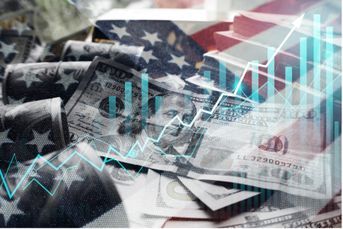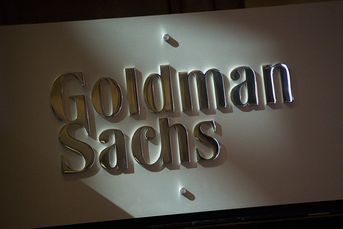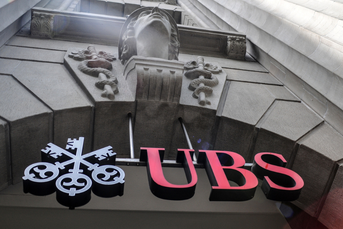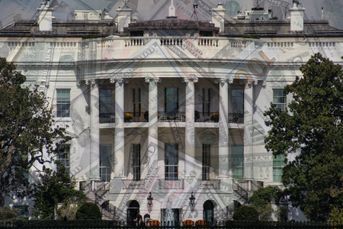Employment outlook: Too many jobs can’t find workers
A triple shortage in skilled labor, business equipment and public infrastructure could foil Trump's plans for 4% economic growth.
All Paul Heinauer wants is a few good auto-glass installers, no experience necessary. The only requirements are mechanical aptitude, a clean driving record, U.S. citizenship or a green card, friendliness and honesty; pay starts at $12 an hour and goes up to $70,000 a year including overtime and bonuses. So few people are applying that Mr. Heinauer, the owner of Glasspro in North Charleston, S.C., went to Blessed Sacrament Church in Charleston on Dec. 11 to make a pitch after the Spanish-language Mass. “I’ve spent the majority of my time trying to recruit within the last year,” he says.
Futurists have been saying for a while that the U.S. is hurtling toward a jobless economy, with driverless long-haul trucks and cashier-free brick-and-mortar Amazon stores. Someday, maybe. Right now the problem isn’t too many workers who can’t find jobs. It’s too many jobs that can’t find workers.
The U.S. economy is going through a sea change in which the main constraint isn’t demand but supply. There’s plenty of consumer demand for goods and services, but companies lack the workers to satisfy it. Workers, in turn, don’t have the tools they need to do their jobs, because business investment in modern machines, software and buildings has been weak. Government is also to blame: Congested roads, bridges and ports are evidence of chronic public underinvestment in the infrastructure that supports growth. “We’ve moved from a period of cyclical, demand-side recovery to structural, supply-side stagnation,” says Robert Atkinson, president of the Information Technology and Innovation Foundation (ITIF).
This has big implications for President-elect Donald Trump. When Barack Obama took office at the height of the financial crisis, the U.S. economy had abundant spare capacity; all it needed was someone to use it. Hence the roughly $800 billion American Recovery and Reinvestment Act, which boosted demand but added to a big — and unpopular — federal budget deficit.
Mr. Trump takes office at a time when Keynesian stimulus is no longer the most urgent need. The slack is mostly gone. The president-elect’s aim of roughly doubling annual growth “is nearly impossible to achieve over a sustained period, absent transformative factors outside the government’s control,” the Committee for a Responsible Federal Budget, an anti-deficit group, wrote in a Dec. 9 blog post. Tax cuts and government spending increases will backfire if all they do is rev up demand temporarily, and Mr. Trump’s plan to expel undocumented aliens would shrink the workforce, depressing growth.
What could work, economists say, are government policies, including strategic tax cuts, focused on fixing the supply side of the economy. These would include education and training to lift the productivity of the American workforce; more and better equipment for workers to use; and infrastructure spending to clear traffic jams and other bottlenecks, not just put shovels into people’s hands.
The change in the economy is most obvious in the labor market. The U.S. unemployment rate fell in November, to 4.6% — well below the 5.8% average since monthly record keeping began in 1948. The number of unemployed people per job opening is down to just 1.4, from a high of 6.6 in July 2009, according to the Bureau of Labor Statistics. Thirty-one percent of small businesses have jobs they can’t fill, according to a November survey by the National Federation of Independent Business. That’s tied for the most since 2001. Tight labor markets “could slow down the economy in the next couple years,” says Gad Levanon, chief North America economist at the Conference Board, a business research group.
Sealed Air, the maker of Bubble Wrap IB and other cleaning and packaging products, commissioned a study of company shortages. Energy, water and land came up, but the No. 1 answer around the world was skilled labor, says Ron Cotterman, Sealed Air’s vice president for sustainability. “That was a real surprise to us,” he says.
At the end of 2009 it took Aaron Wiegel less than a week to fill an opening for a skilled labor position at Wiegel Tool Works, a precision-metal-stamping company in Wood Dale, Ill. “Today it’s a matter of months, and that’s if I can find someone,” says Mr. Wiegel, the company’s president. Most are job-switchers. “These aren’t people coming off of unemployment.”
Some economists question how tight the labor market is. “In the early 1950s, the unemployment rate fell below 3%,” Deutsche Bank Chief U.S. Economist Joseph LaVorgna pointed out in a note to clients on Dec. 13. Foreign competition is continuing to depress wages in many sectors, he says. Average hourly earnings grew only 2.4% over the past year, below the sum of inflation and productivity growth, says Elise Gould, a senior economist at the Economic Policy Institute. On the other hand, the Wage Growth Tracker of the Federal Reserve Bank of Atlanta, which tracks pay for the same workers over time, reached an eight-year high of 3.9% in November. Strength in jobs helped persuade the Federal Reserve to announce a quarter-point increase in the target range of the fed funds rate, to 0.5% to 0.75%, on Dec. 14.
Outdated equipment is a second constraint on growth. That seemed like less of a problem in the years after the financial crisis. If anything, unions and politicians worried that new machines would displace workers. But now that unemployment is low, more business investment would clearly help workers, not hurt them. By making them more productive, it would allow them to command higher pay without hurting a company’s profit margin or causing inflation. The sluggish wage growth of the past eight years is partially a result of the slow improvement in labor productivity, which in turn is a consequence of weak investment by businesses in “labor-augmenting” technology such as improved software. “Many manufacturers lack a sense of urgency” about adopting digital technologies, Boston Consulting Group said on Dec. 12, based on a survey of 380 U.S. executives and managers.
On paper, U.S. industry still has plenty of capacity; according to the Federal Reserve, the utilization rate was just 75% in November, below the long-term average. But some of that capacity is old. The stock of nonresidential equipment assets per worker — stuff like computers and machine tools — fell 23% from 1995 to 2014, according to Bureau of Economic Analysis data. “Why would we expect workers to be more productive when they have fewer or less valuable tools?” asks the ITIF’s Mr. Atkinson. In companies’ defense, it doesn’t make sense for them to put in machines their workers can’t handle. “We have purposefully not invested in some new equipment because … we don’t have the talent to operate and maintain it,” says JB Brown, president of Bremen Castings, a foundry and machine shop in Bremen, Ind.
The third area where scarcity is becoming an issue is public investment. For all the talk about spending on infrastructure, it hasn’t been happening, partly because the states and localities that do a lot of it have cut back to balance their budgets, as required by state law. Investment has barely offset the deterioration of the old stuff, whether sewers, water conduits, levees or highways. The average age of fixed assets owned by governments rose from less than 21 years in 2000 to 24 years in 2015.
Federal Reserve Chair Janet Yellen has been slow to raise interest rates for fear of choking off demand. In an October speech, she mused about the “high-pressure economy” theory, which says that an extended period of very low unemployment pulls workers in from the margins of society, ultimately beefing up the supply side of the economy. That could work. But, depressingly, today’s low jobless rate hasn’t done much to pull in workers: The labor force participation rate for men of prime working age (25 to 54) is lower than it was during the 2007-09 recession. The supply side of the U.S. economy is clearly coming under strain.
Learn more about reprints and licensing for this article.








